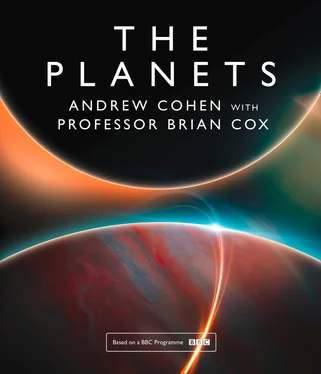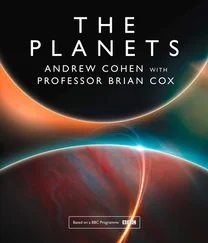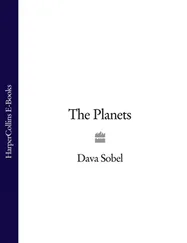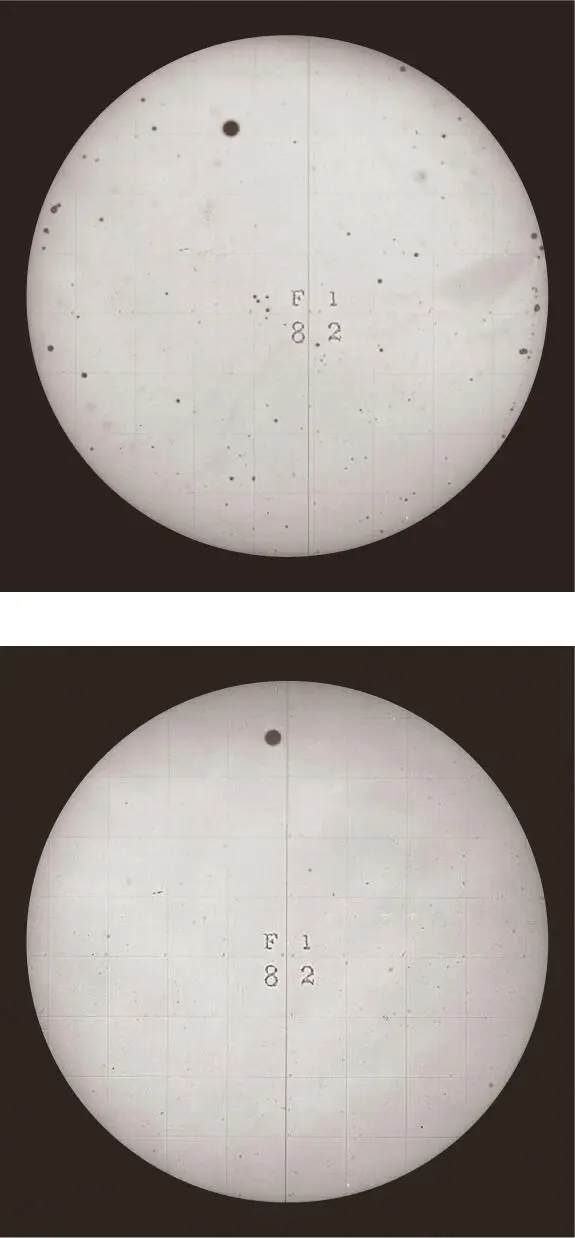
© United States Naval Observatory
The transit of Venus – as the planet crosses the face of the Sun – was captured in photographic plates as early as 1882.
None of this is solid proof, but it does begin to point us in one direction, and with no further exploration of the surface we have had to rely on an accumulation of indirect evidence to begin to paint a more detailed picture of Venus’s watery past.
As with almost all of our understanding of the planets, the evidence that built this picture has been accumulated through decades of exploration. Starting with the Venera missions’ first touchdown on the planet to the Pioneer Venus orbiter, and to the more recent Magellan mission, which not only relayed extraordinary radar soundings of the surface of Venus but provided the first full topographical map of the planet collated over a period of four years in orbit.
Combining all of the data that has been accumulated over decades of exploration has allowed us to peer deep into the planet’s past, using the same tools that enable us to model the future of climate change here on Earth to create climate models of Venus in the past, present and future. The results of this analysis, conducted most recently by a team from NASA’s Goddard Institute for Space Studies (GISS), all point to the same conclusion – in the distant past Venus was a planet covered in shallow primordial oceans.
Some estimates suggest this water world was far from fleeting, a blue planet just like our own that could have been sustained for around 2 billion years and perhaps only disappeared some 700 million years ago. It’s a tantalising thought that such a similar world to our own existed for so long with liquid water on its surface. We know life took hold quickly on our own blue planet, within half a billion years of the Earth being formed, so there seems good reason to suspect that if Venus really was as wet as the models predict, it too could have sprung into life. Exactly what went on in the long-lost rivers and oceans of Venus is yet to be discovered; hidden behind the clouds, we have not yet been back to search for any signs that life ever took hold here. Our exploratory attentions have turned to Mars as a planet that not only has a fertile past but is also a possible target for human colonisation in the future. We know for certain that no life (at least no life we understand) could exist on Venus today, and perhaps even the evidence of any biology on that long-lost water world has long ago vanished under the oppressive heat, rampant volcanism and extreme pressures of the planet today. So where did all that water go? Understanding this requires an exploration of the differences between Earth and Venus, as well as the similarities.
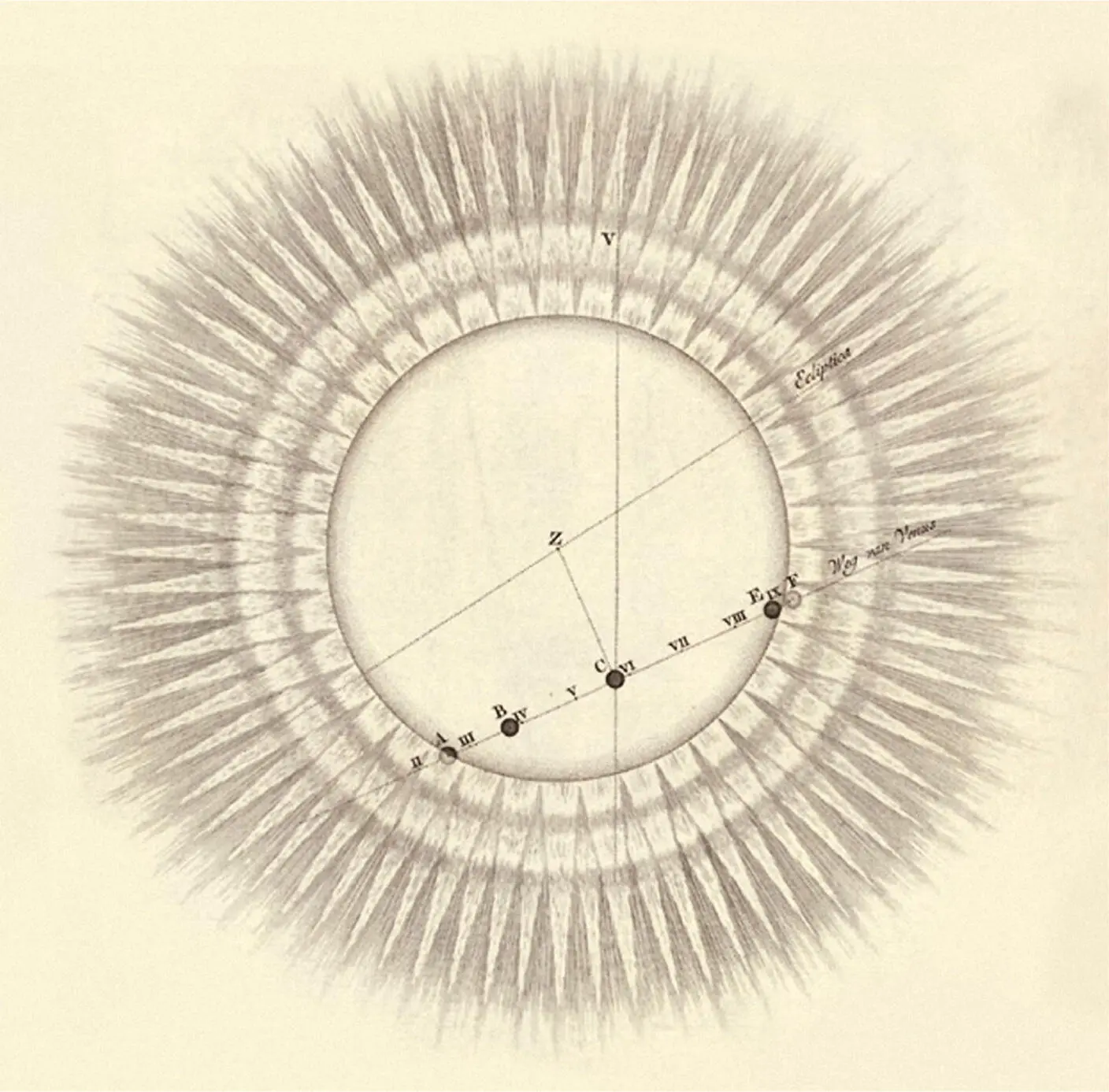
© LIBRARY OF CONGRESS / SCIENCE PHOTO LIBRARY
Venus has fascinated scientists for centuries; this diagram was drawn by Nicholas Ypey in 1761, showing the transit of Venus that year.
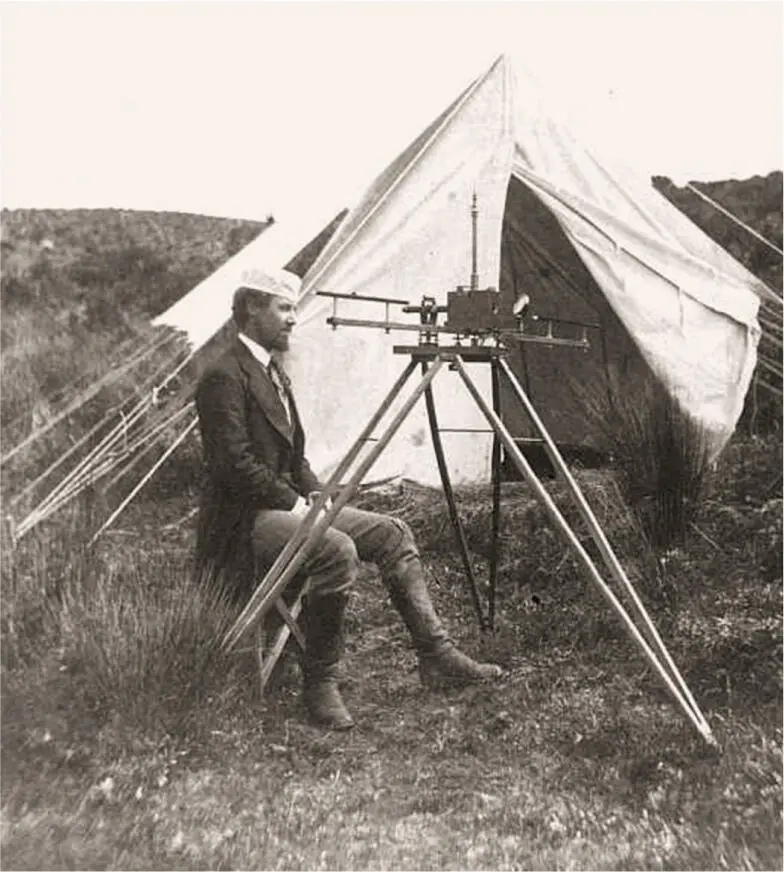
© United States Naval Observatory
Catching a glimpse of the transit of Venus is rare and has been important throughout the centuries. The next such sightings are predicted for 2117 and 2125. Recording each transit is vital research, which helps scientists to determine the scale of the Solar System.
‘Oh most grateful spectacle, the realisation of so many ardent desires.’
Jeremiah Horrocks, seeing the transit of Venus in 1639
Today Venus has the slowest rotation of any planet in the Solar System, taking 243 Earth days to complete one rotation on its axis. This period is known as the sidereal day, which is different to a solar day – the time it takes for the Sun to return to the same point in the sky. On Earth the sidereal day, at 23 hours, 56 minutes and 4.1 seconds, is very close to the solar day, which lasts pretty much exactly 24 hours. But on Venus the difference between these two periods is much greater. Even though the planet takes 243 days to rotate on its axis when combined with its orbit, a solar day on Venus lasts for 116.75 Earth days. It means every day on Venus lasts almost four months on Earth, and not only that, but Venus also rotates from east to west (one of only two planets to do so, along with Uranus). So across this toxic world a sunrise would last literally for days as it inches across the sky.
This slow progression of the Sun in the Venusian sky, due to the planet’s creeping rotation, has raised many questions about how in the past the planet would have been heated and how the climate would have been affected by such a different rotation compared with the Earth’s. Today the climate of Venus is what is known as isothermal – there is a constant temperature between the day and night sides and between the equator and the poles. This is because the thick atmosphere literally acts like a blanket, dissipating the heat of the Sun so that the only real variation in temperature on the Venusian surface occurs due to differences in altitude. In its past, however, this may have been very different – with a more Earth-like atmosphere, so the Sun would have been beating down on the planet’s surface for days on end.
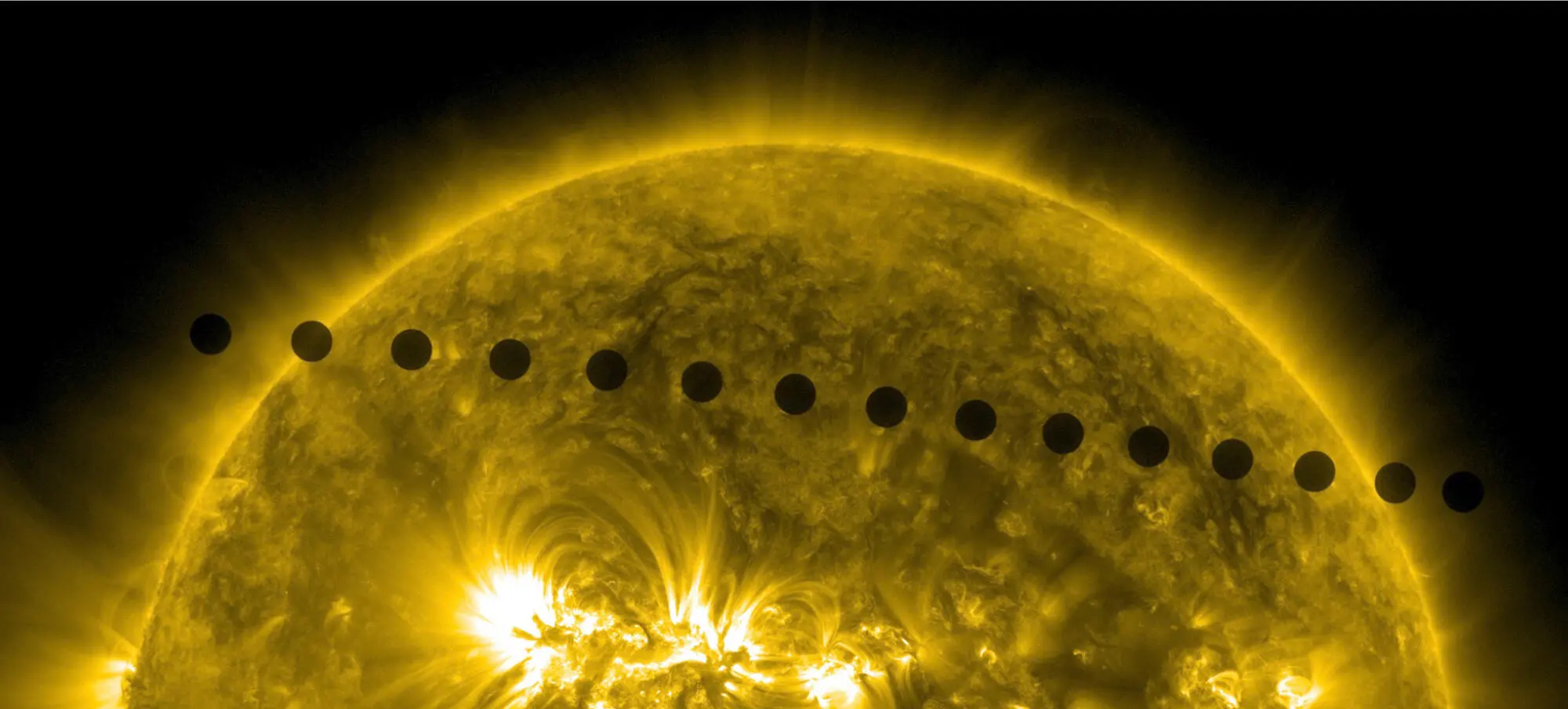
© NASA / GODDARD SPACE FLIGHT CENTER / SDO / SCIENCE PHOTO LIBRARY
Composite image showing the transit of Venus in June 2012 (in black spots).
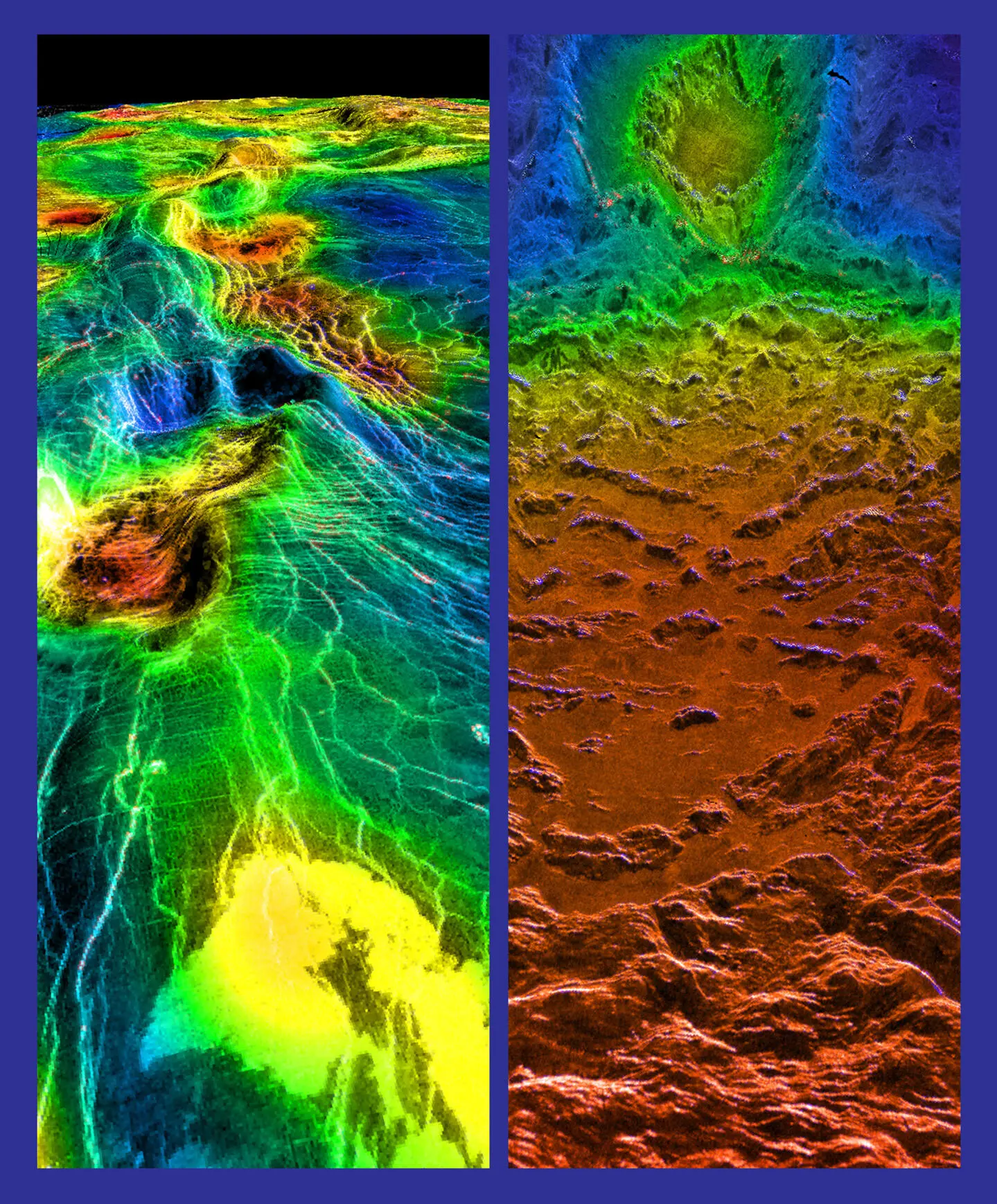
© NASA/JPL/USGS
NASA’s Magellan mission in the 1990s sent back images of Venus that enabled scientists to create a more detailed image of the landscapes of this long-lost world. They revealed a terrain of lowlands and highlands, dotted with active volcanos – a far cry from the ancient watery Venus imagined and depicted in some artworks.
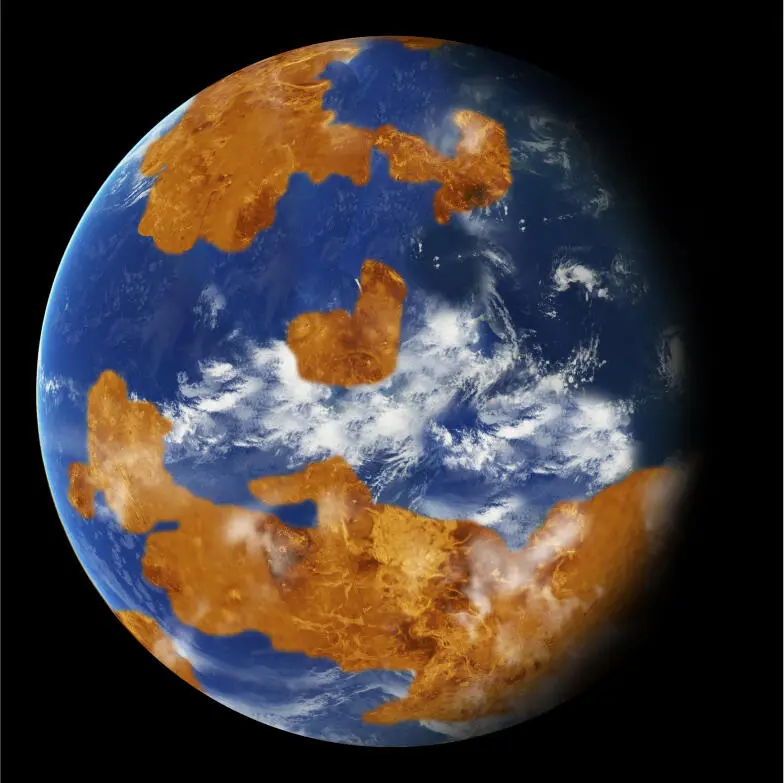
© NASA
‘In the GISS model’s simulation, Venus’s slow spin exposes its dayside to the Sun for almost two months at a time. This warms the surface and produces rain that creates a thick layer of clouds, which acts like an umbrella to shield the surface from much of the solar heating. The result is mean climate temperatures that are actually a few degrees cooler than Earth’s today.’
Anthony Del Genio, planetary scientist
To make things even more complex, we know the spin of a planet is intimately linked to its climate and we’ve got strong evidence to suggest that how fast a planet spins is directly related to its chance of habitability. Until very recently it was assumed that the slow rotation of Venus must have been caused by the presence of a thick atmosphere early on in its history that in effect acted as a brake on the planet’s spin. However, recent studies now suggest the planet could have had a thin atmosphere like that of modern Earth and still have ended up with its slow rotation.
Gradually, as we start to build a picture of ancient Venus we begin to see beyond the cloud cover of today through to an ancient planet with an Earth-like atmosphere, and a day lasting over 200 Earth days as the Sun beat down on the ocean-covered surface.
Читать дальше
